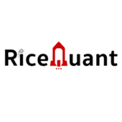
In the fast-paced world of financial markets, algorithmic trading has emerged as a game-changer, providing traders with a competitive edge and the ability to capitalize on market opportunities swiftly. Robo-trading has become increasingly popular, offering automated trading strategies that execute trades based on predefined criteria. In this article, we will compare and analyze the features of various prominent algorithmic trading platforms in the market, including ALGOGENE, MetaTrader5, QuantConnect, RiceQuant, and TradingView.

1. ALGOGENE (https://algogene.com)
ALGOGENE’s strength lies in its ability to generate and optimize trading strategies based on historical data, market conditions, and user-defined parameters. The platform's appeal lies in its adaptability and customization options, allowing traders to fine-tune strategies to their specific needs. ALGOGENE also operates a robo-trading marketplace, in which investors can choose to buy/subscribe to the various robo-traders available to do algo trading for them. It is the worldwide first blockchain and NFT application on algorithmic trading to emphasize on its transparency in every move that the robo traders make on the investors account, and thus incrementing trust from users.

2. MetaTrader5 (https://www.metatrader5.com/)
MetaTrader5 is a leading platform in the algorithmic trading industry. Its strength lies in its wide adoption and compatibility across various brokers. MT5 offers a comprehensive suite of tools for algorithmic trading, including advanced order types, built-in indicators, and an intuitive development environment. One drawback is its primarily retail-focused user base, which may not cater to the needs of institutional traders or those requiring advanced trading functionalities. Additionally, the platform's programming language, MQL5, may not be as flexible or widely supported as other programming languages used in algorithmic trading.

3. QuantConnect (https://www.quantconnect.com/)
QuantConnect is renowned for its cloud-based algorithmic trading platform. A key strength of QuantConnect is its vast community and open-source ecosystem. Traders can tap into a wealth of knowledge, shared algorithms, and collaborative discussions. The platform's versatility allows users to build, test, and deploy algorithms across multiple asset classes, catering to both novice and experienced traders. While QuantConnect is a widely recognized platform with an extensive ecosystem, it does have some weaknesses. One limitation is the steep learning curve for novice traders due to its complex architecture and extensive documentation. Additionally, the availability of financial data for backtesting and strategy development may be limited, especially for niche or less liquid markets.

4. RiceQuant (https://www.ricequant.com/)
RiceQuant stands out with its focus on quantitative research and data analysis. Their strength lies in providing comprehensive financial data and powerful analytical tools. Traders can leverage these resources to conduct in-depth research, backtest strategies, and gain valuable insights. RiceQuant, being a Chinese-based platform, primarily focuses on the Chinese equities market. This regional focus could be a weakness for traders seeking global market exposure. Additionally, the platform's user interface may not be as intuitive for non-Chinese users, which could pose challenges for international traders.

5. TradingView (https://www.tradingview.com/)
TradingView has gained popularity for its intuitive and visually appealing charting platform. Its main strength lies in its extensive charting capabilities and social trading features. Traders can access a wide range of technical analysis tools, customizable indicators, and real-time market data. While TradingView offers a versatile platform with a range of features, it has certain weaknesses. The platform's copy-trading capabilities are not as robust compared to specialized algorithmic trading platforms. Traders may find limitations in terms of customization options and advanced backtesting functionalities, which are essential for developing complex trading strategies.

Conclusion
With the advancements of algorithmic trading platforms in the market, it is important for investors to consider the offered services of different platforms in regards to their financial goals. By carefully evaluating both strengths and weaknesses, traders can make informed decisions and leverage the power of robo traders to enhance their trading strategies in today's dynamic and competitive markets.
ALGOGENE has shown to be one step ahead in the market by having fine-tuning functionalities suitable for high performance goals, with its transparency policy also takes a step forward in which others are not able to offer. For more details on the services they offer, you can visit Algo Marketplace to explore high performance robo traders to reach your financial goals.
Special Offer
Enter my promote code "355HJSdMNyBy" for any purchase on ALGOGENE, you will automatically get 8% discount.
